VW Passat Review: Flying The Flag For The Estate Car
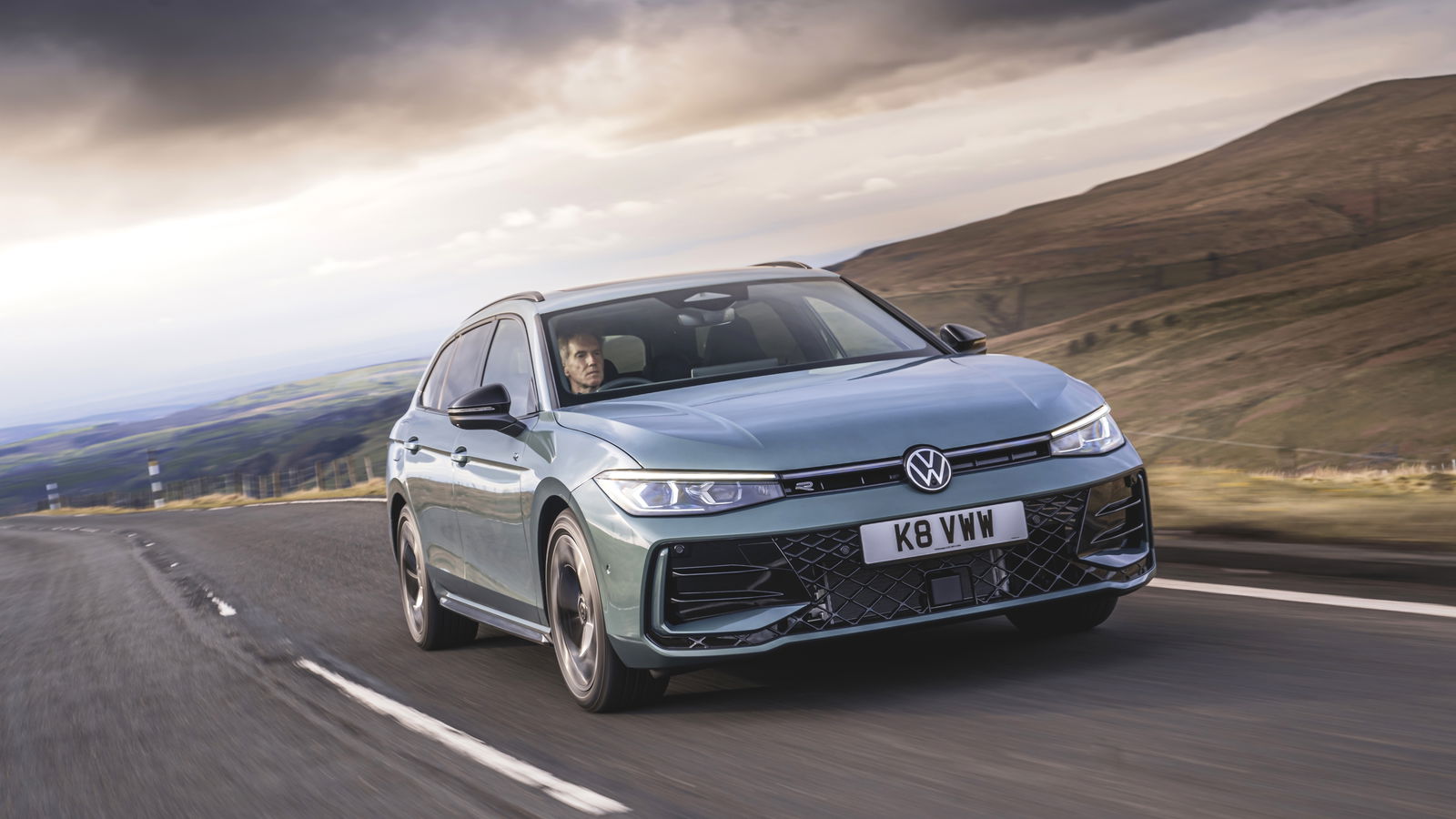
Pros
- Vastly spacious interior and bootComfortable and refined
Cons
- Interior layout still needs workLimited powertrain choice
Believe it or not, the Volkswagen Passat is now in its ninth generation. It’s always felt like part of the furniture, but it’s still a little surprising to realise quite how long it’s been around – a year longer than the Golf, although VW’s stalwart hatch will probably get a bigger 50th birthday bash than the Passat did last year.
The headline for this new Euro-market Passat is that the saloon has gone the way of most rivals – the car is now estate-only.
Powertrain choices have been significantly thinned out too. A few years ago, a big estate like this without a diesel option would have been unthinkable, but you’ll find no oil burners in the lineup.
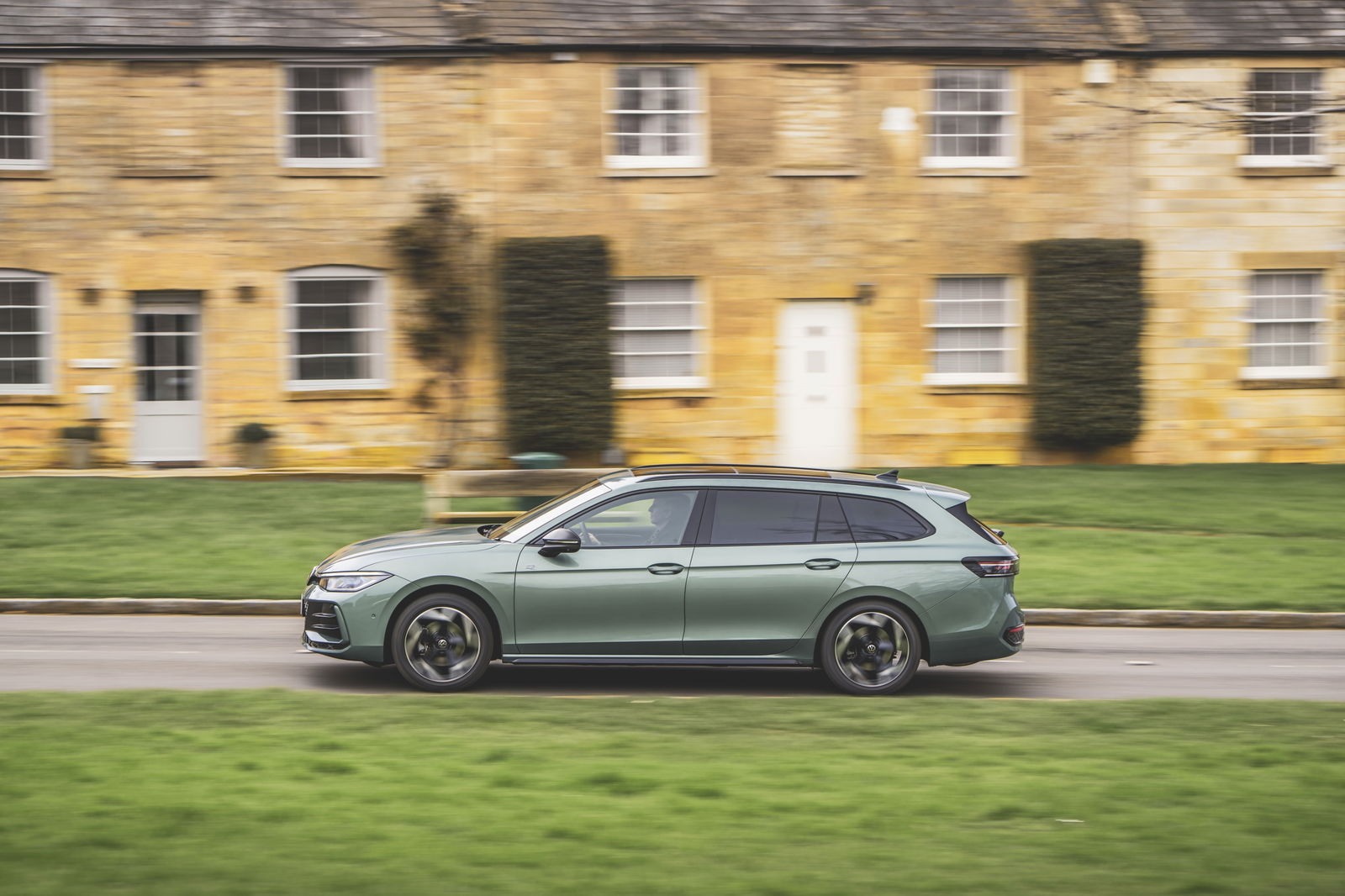
Instead, you get a single 1.5-litre turbocharged petrol four-cylinder, currently only available with some very light electrical assistance from a 48v mild hybrid system. It’ll soon be joined by a pair of plug-in hybrids using the same engine.
In this non-PHEV version, you get 148bhp, driving the front wheels through a seven-speed DSG automatic. 0-62mph takes 9.8 seconds, and top speed is 138mph. Quoted MPG is 51.5, and low-to-mid 40s shouldn’t be a problem in the real world, helped by a slippery 0.25Cd drag coefficient. All sounds very sedate, and that’s a nice way of summing up this car.
Recent VWs have taken a kicking for their frustrating interior layouts. While the Passat’s is an improvement, there’s still work to do. It’s dominated by a vast 12.9-inch touchscreen, and VW still insists on throwing most functions onto it. At least things like climate controls are permanently anchored to the bottom of the screen. The TFT instrument cluster throws far too much information at you at once, though.
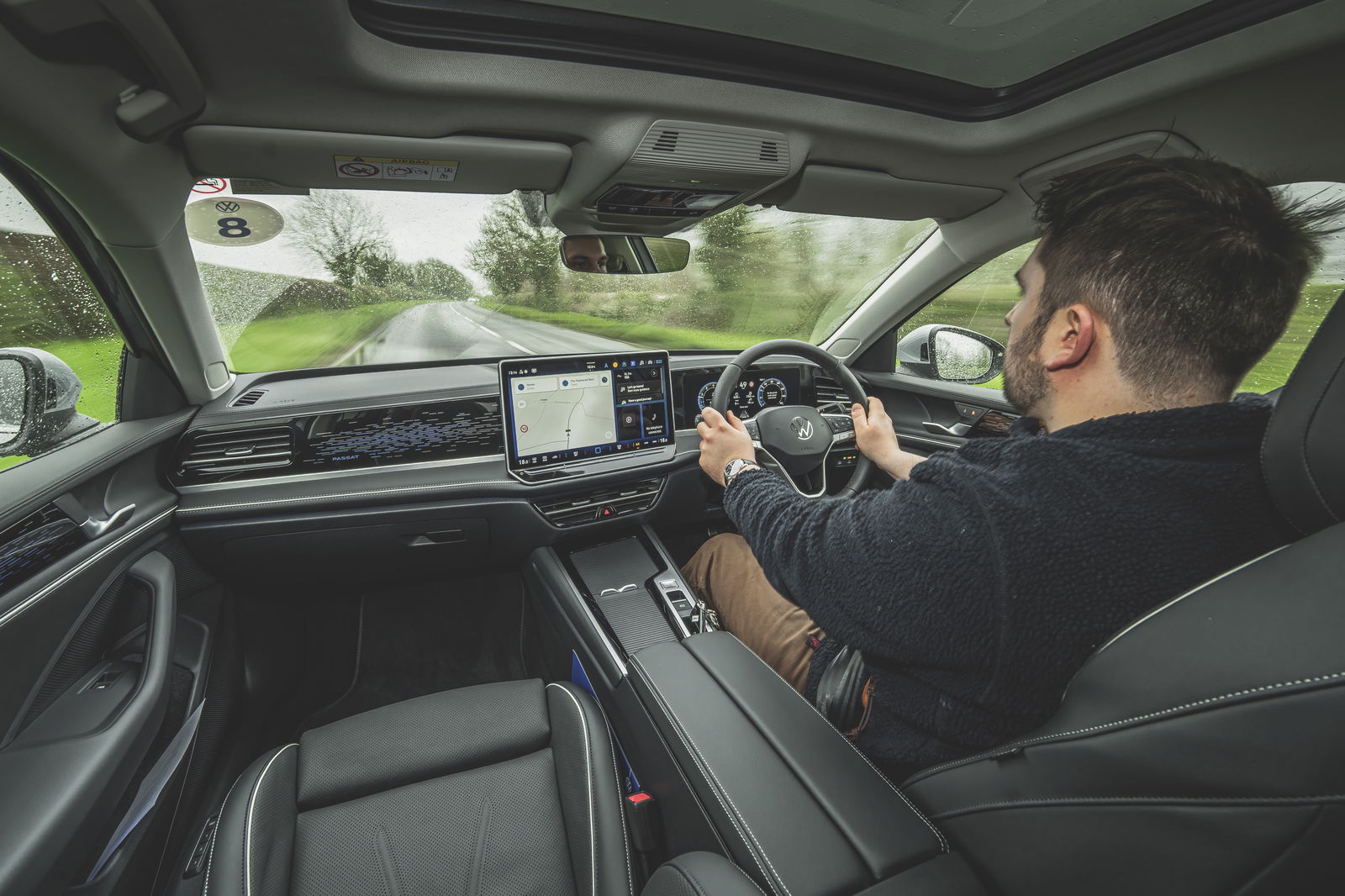
The interior still features some hopelessly unintuitive capacitive controls, although thankfully just for volume (which can also be adjusted via proper switches on the steering wheel) and heating, and they're now backlit. The gear selector has been migrated to a stalk behind the wheel, much like on the ID models. While it does free up a bit of extra storage space in the centre console, it takes some adjusting to and mostly feels like change for change’s sake.
Thankfully, the rest of the interior is a much better story. The seats on this mid-range Elegance version are very comfy and you can adopt a relaxed position. Choose the sporty R-Line trim and you get some equally lovely bucket seats.
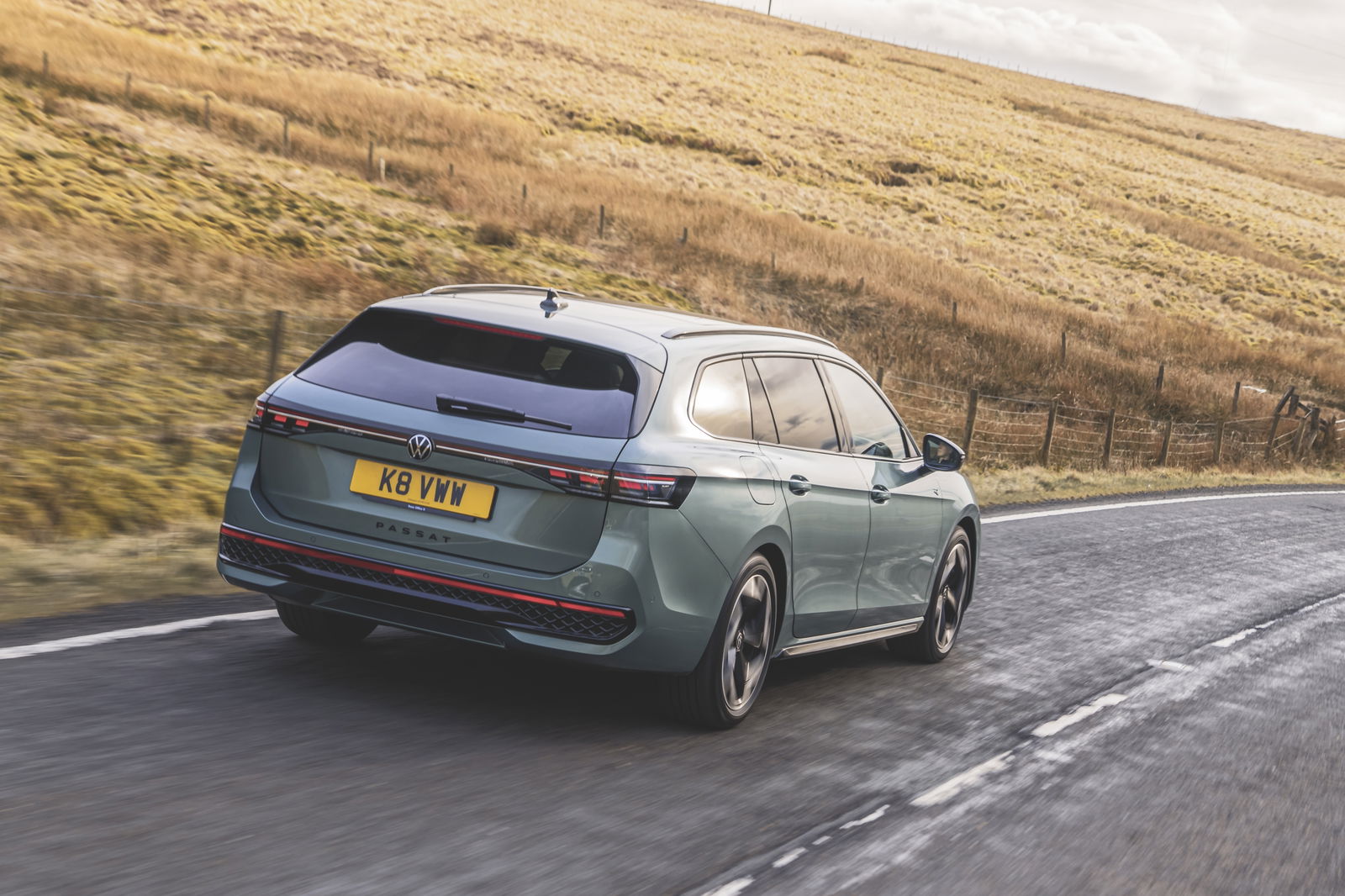
Material quality is very good, and it’s an airy and spacious place to sit. The new Passat is slightly longer than the outgoing estate, and it shows: my driving position means that space behind me is often compromised, even in big-ish saloons and estates, but I was able to sit behind ‘myself’ here with room to spare. Seats up, the boot offers 690 litres of storage, bigger than anything else in this class bar the closely related Skoda Superb Estate.
You may have noticed I’m talking a lot about the interior, and not what it’s like to drive. That’s because it’s a big, practical, plush estate car. The driving experience is exactly what you’d expect.
It sounds like a 1572kg estate would be asking a lot of 1.5 litres and 148bhp, but while the Passat sometimes feels strained when gathering speed, it’s never left particularly wheezing and breathless.
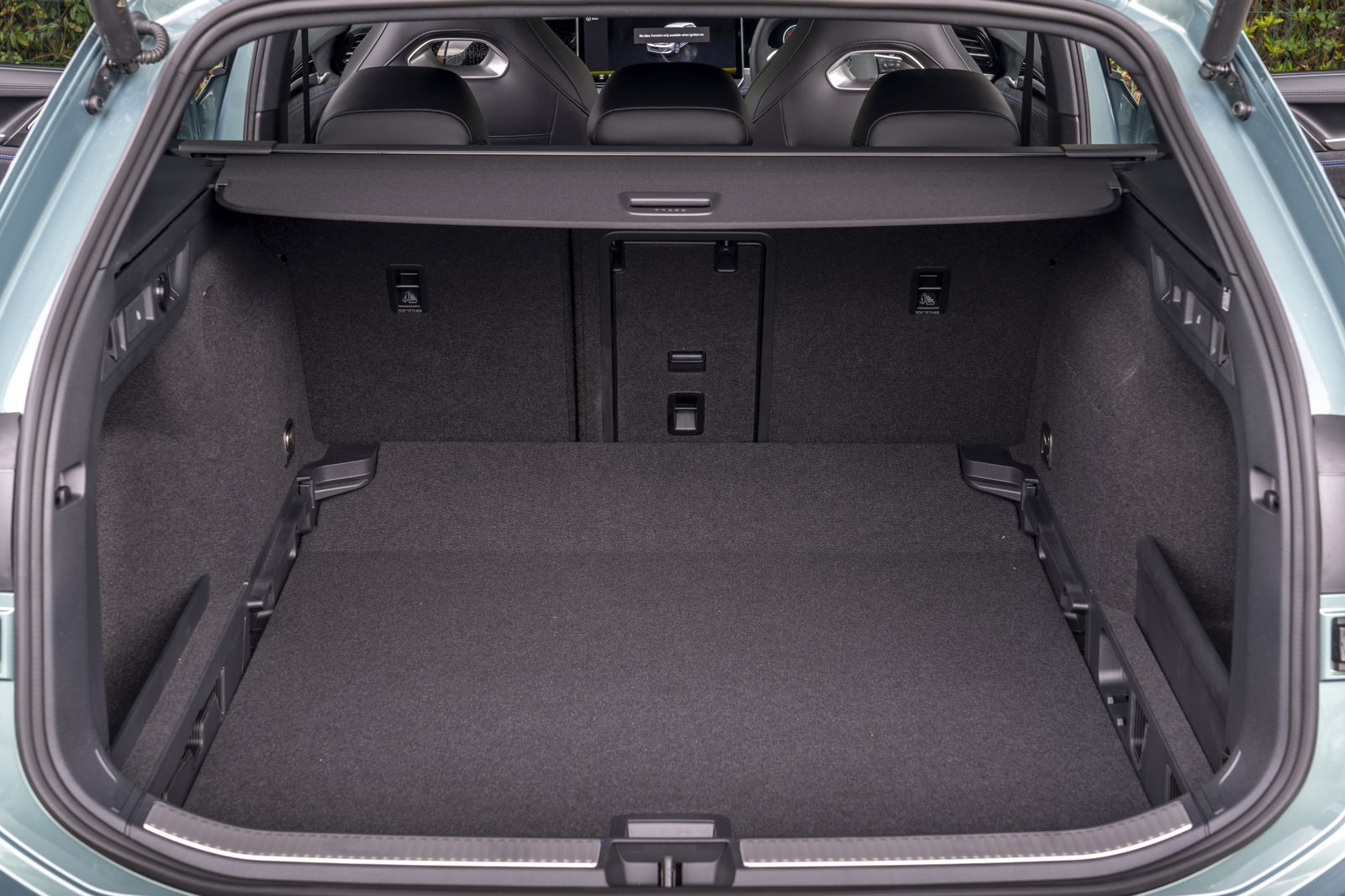
The DSG gearbox’s shifts are imperceptibly smooth, although it often hesitates to upshift once you’re up to speed and leaves the engine noisily spinning for a few moments. You can take control yourself via some cheap-feeling little paddles, but it’s really not the sort of car that invites that. The same goes for the use of sport mode.
No, the Passat is a car to sit back and relax in, and for this, it’s very good. It rides smoothly, never really feeling ruffled by poor surfaces or big dips and bumps, but doesn’t feel heavy or wallowy either. It’s quiet, refined and very comfortable. Go for the R-Line and you get VW’s Dynamic Chassis Control, which gives you the choice between comfort, normal and sport suspension settings. It’s hard to imagine, though, how artificially firmed-up suspension would improve the Passat in any way.
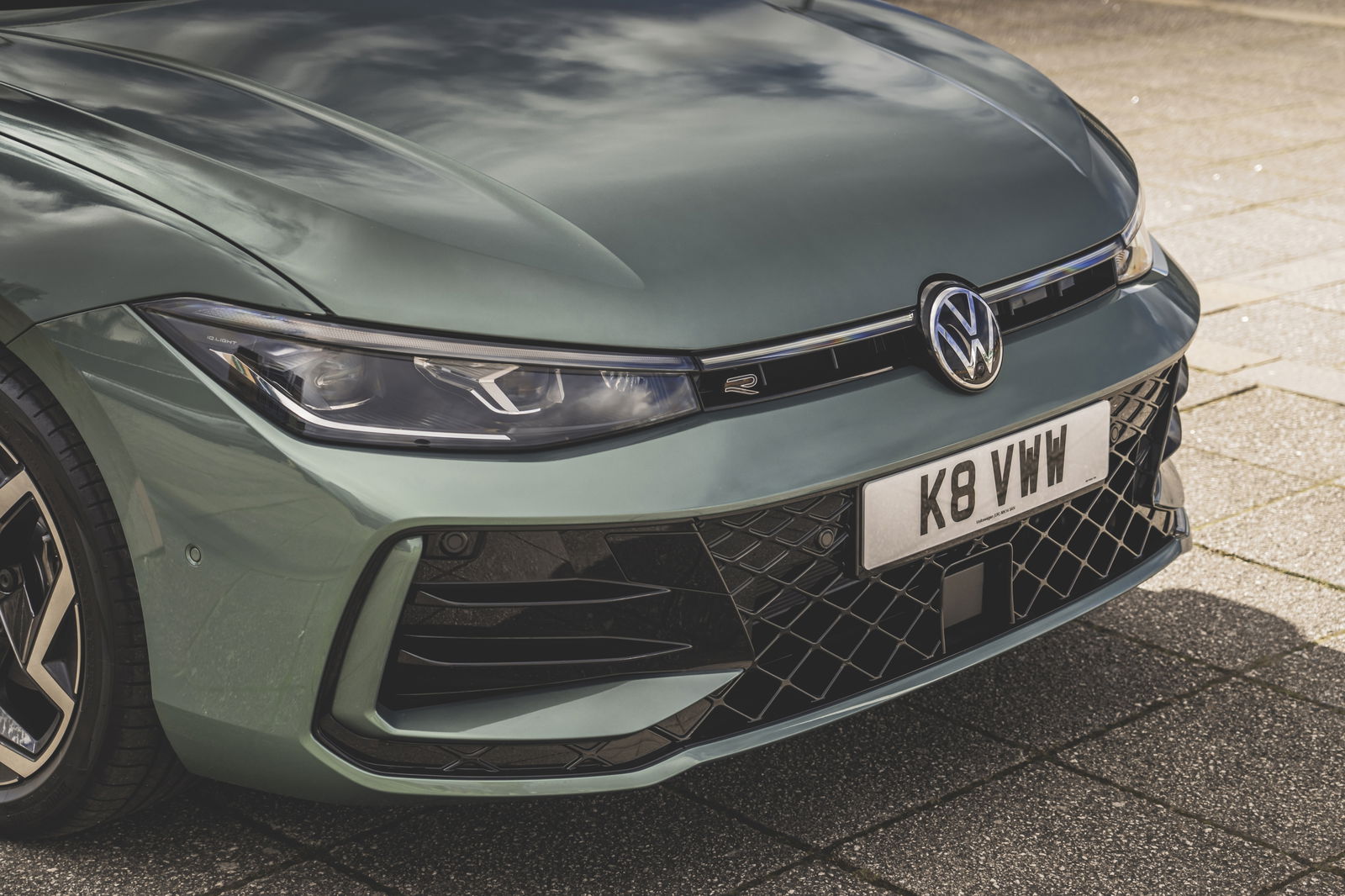
Coming from lots of new cars with very high-geared, twirly low-speed steering, the Passat’s is surprisingly heavy when manoeuvring, but once out on the road, it’s smooth and direct. Feel? None whatsoever, but you shouldn’t expect that from a car like this. You turn the wheel, and the car goes where you want it to.
My car had VW’s optional Travel Assist system, endowing it with level 2 autonomous capability. This means you can go hands- and feet-free for short bursts on dual carriageways. It works well but is ultimately a gimmick for now given you can only go a tiny distance before the car forces you to take over the steering again.
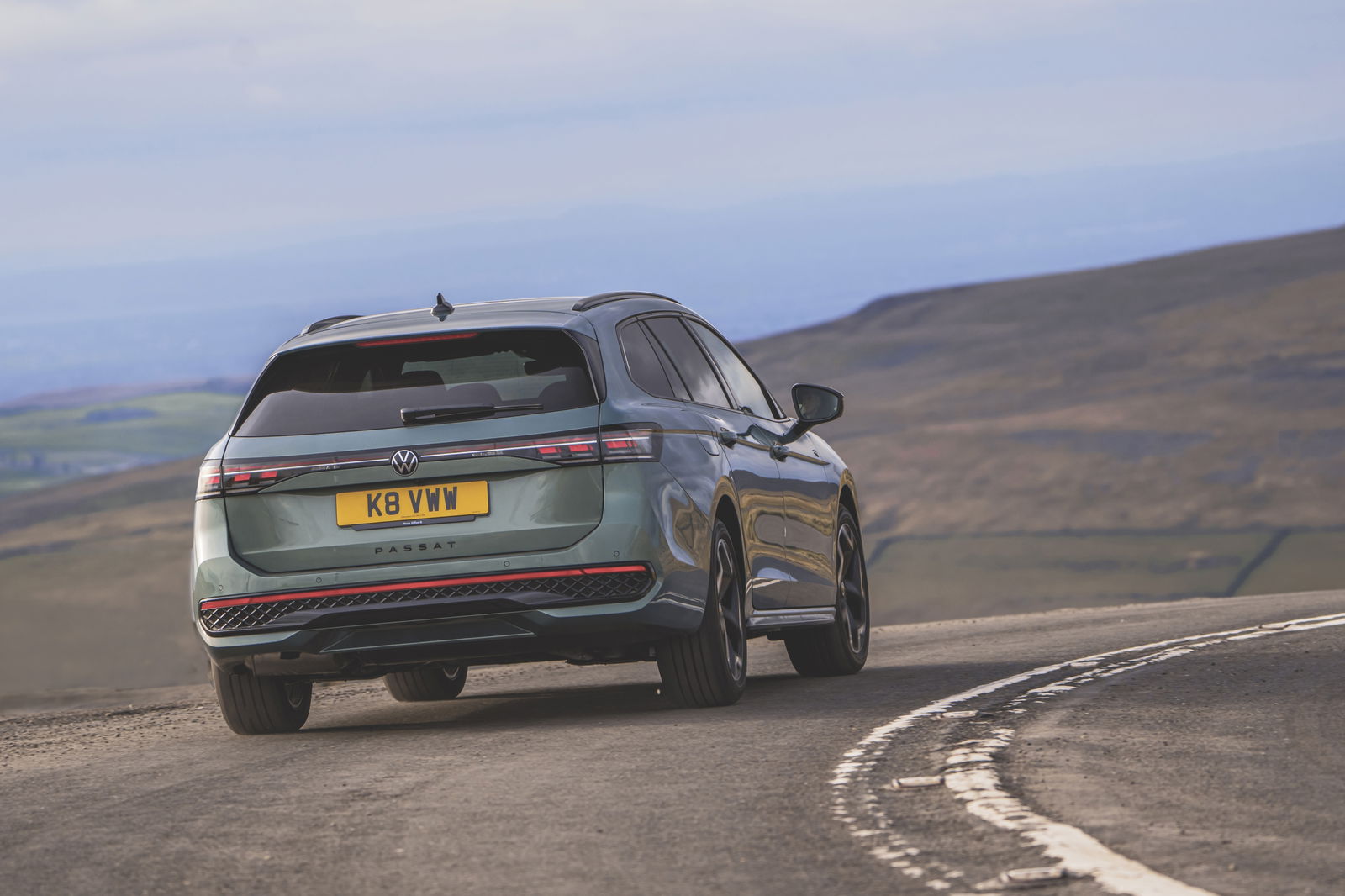
Prices for the Passat range start at £38,490, with this lightly optioned-up Elegance version coming in at £43,305. This is exactly where you’d expect it to be: usefully undercutting the BMW 3-series Touring, Mercedes-Benz C-Class Estate and Audi A4 Avant, but a bit more than the less practical but arguably more stylish Peugeot 508 SW. VW also offers the smaller, swoopier Arteon Shooting Brake and the similarly vast, all-electric ID.7 Tourer, and the Passat comes in significantly cheaper than both of those too.
If you’re in search of a big-booted family car, and still reluctant to succumb to the unstoppable SUV tide, then firstly, we applaud you, and secondly, the Passat is as strong and sensible a contender as it’s been for the last 50 years.
Perhaps the only thorn in its side – besides an interior layout that’s still a way off VWs of old – is the new Skoda Superb. They’re the same car underneath, and just as practical as one another, but the Skoda does it all for less money and with a less frustrating interior. So ask yourself: how much does the VW badge matter to you?
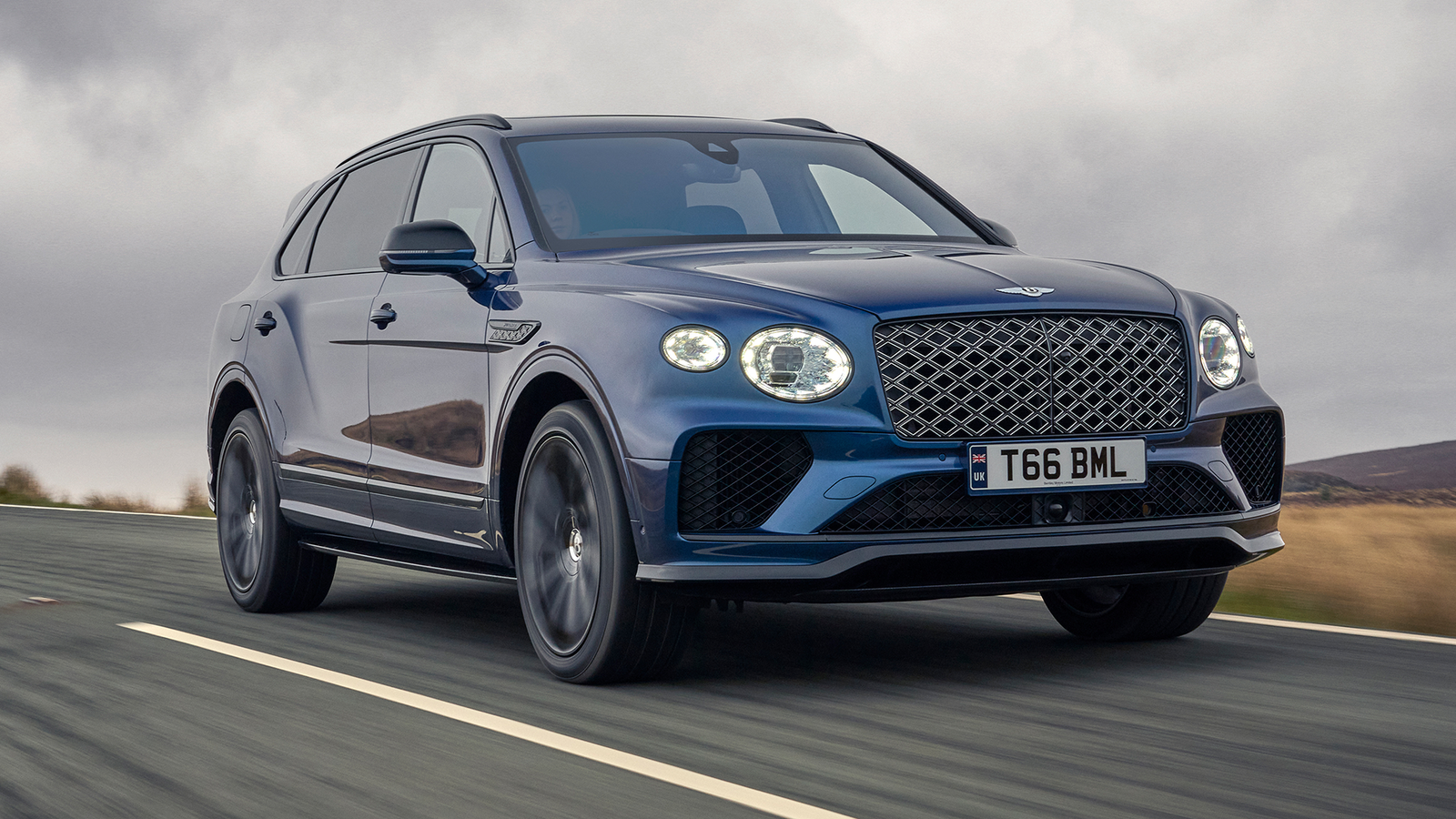
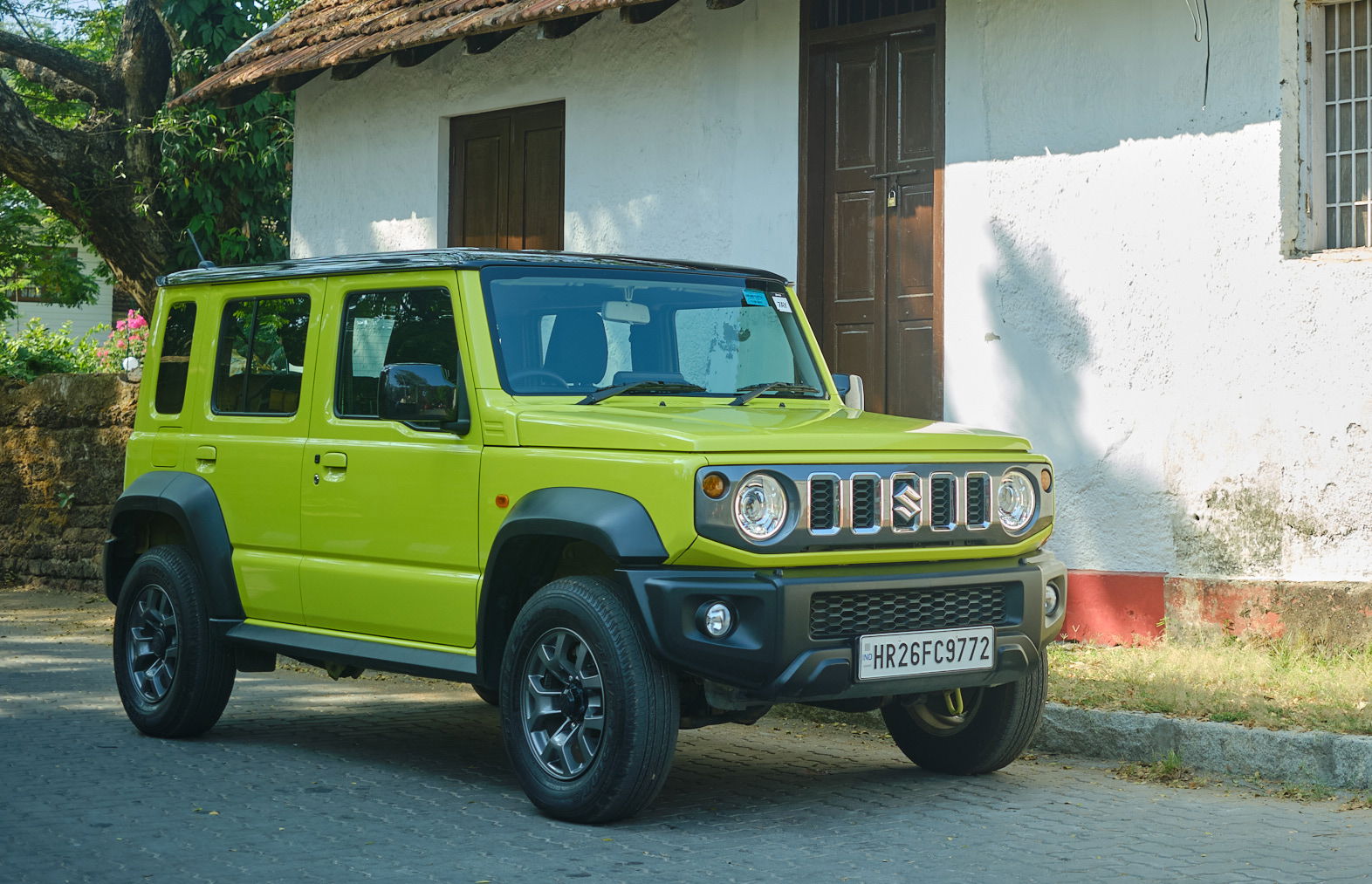

Comments